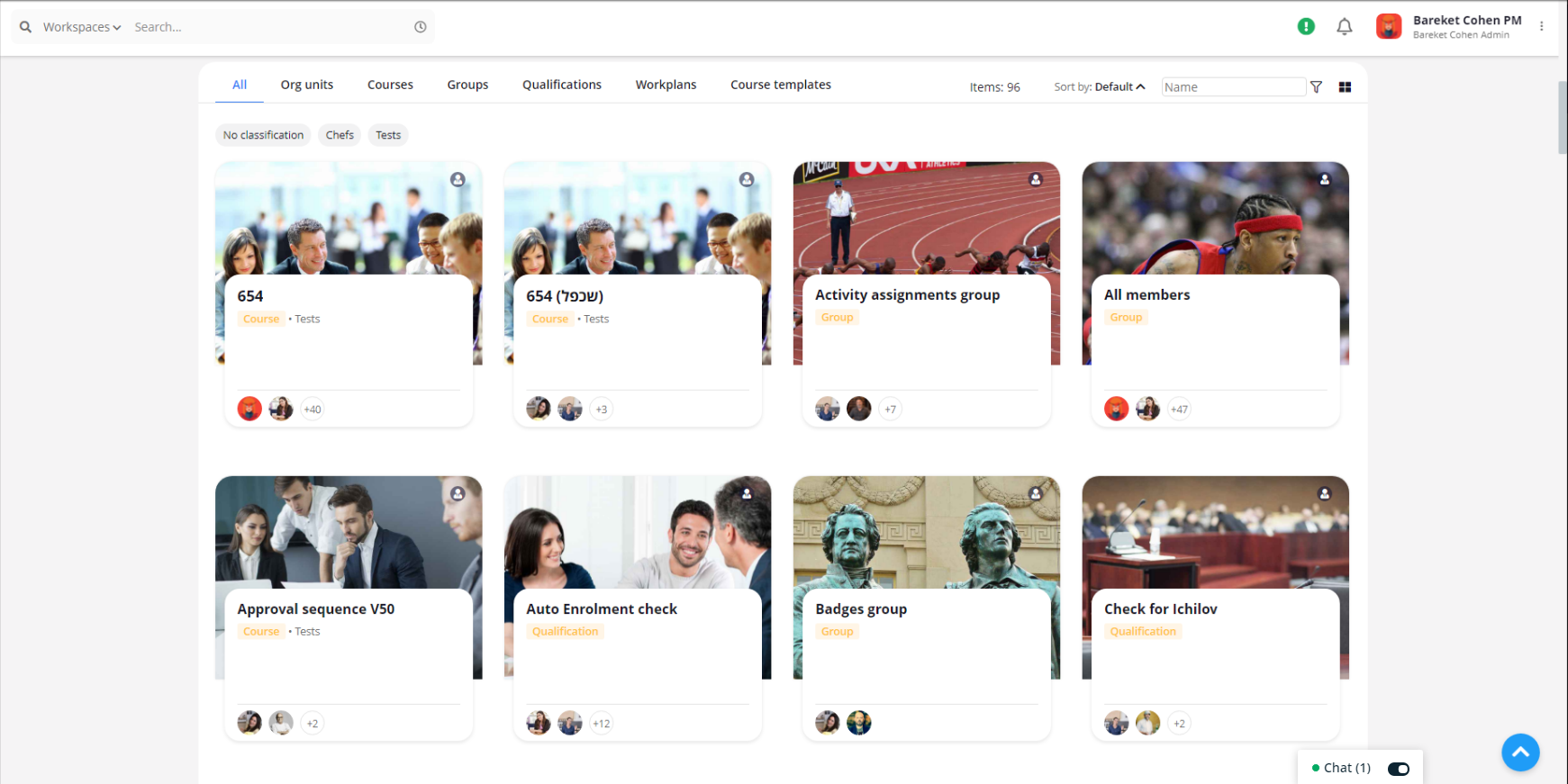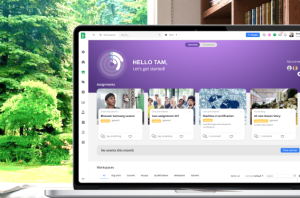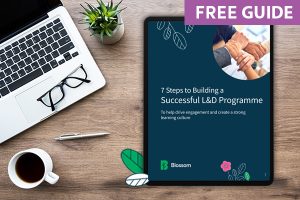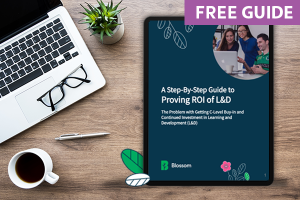This article will give you the information needed to develop a robust L&D strategy in clear, manageable steps.
Failing to act on upskilling and reskilling individual employees can lead to a lack of the knowledge and skills needed to excel in job roles and missed opportunities. A haphazard style for delivering education and training activities can limit business growth, skill enhancement, and overall development of employees.
As a result, businesses suffer from low employee satisfaction, poor organizational efficiency, and overall productivity.
Reduce the potential for inefficient resource planning and training initiatives disconnected from broader organizational goals and priorities.
Have a systematic approach to L&D and take full advantage of opportunities for improvement. Make efficient use of resources and promote employee engagement and development.
Develop an intentional roadmap designed to support individual and organizational growth. This article will give you the information needed to develop a robust L&D strategy in clear, manageable steps.
What is a L&D strategy?
Put simply, an L&D strategy is a strategic framework that outlines how a business trains and develops its people. The strategy aims to enhance the skills, knowledge, and capabilities of a workforce. It’s the blueprint for promoting a culture of continuous improvement.
The strategy is a systematic approach. It seeks to pinpoint L&D priorities, ensuring that resources are allocated appropriately, and includes:
- Learning-related needs of different employees
- Training programs, learning methods, and modalities
- Learning objectives and target audience
- Finances and resources
- Actions and initiatives required to address needs with clear timescales
- L&D evaluation and assessment methods
- Key performance indicators (KPIs)
- Strategy monitoring and evaluation methods
Developing an L&D strategy is a dynamic and collaborative process. It usually requires meaningful collaboration among different teams, departments, and stakeholders.
Let’s start by breaking down the process of developing an L&D strategy into manageable steps.
1. Understand organizational objectives
Not aligning a strategy with organizational goals can result in various negative consequences. The impact of allocating the wrong resources and talent development can lead to misalignment, high turnover, and an inability to respond effectively to industry trends.
The alignment of L&D efforts with organizational goals is crucial for ensuring strategic relevance.
Start by reviewing organizational documents. Annual reports, strategic plans from other business units, and financial reports are a great way to increase your understanding of company goals.
Secondly, meet with leaders, managers, employees, and key stakeholders to get a comprehensive view of organizational objectives and build your knowledge base. Attend departmental meetings and listen to what’s working well and what isn’t.
Lastly, keep an open mind. Utilize the specialist knowledge of colleagues and build a comprehensive understanding of organizational objectives.
2. Conduct a training needs assessment
Making assumptions about your people’s skills, knowledge, and confidence often results in uncertainty, increased risk, and potential negative consequences. This lack of insight can lead to misalignment of talent, hindered decision-making, and missed opportunities for employee development.
Reduce the risk of “flying blind.” Conduct a thorough training needs assessment and identify:
- The current skill and competency levels of employees
- Gaps in knowledge or skills related to regulatory requirements
- The tasks and duties associated with each role
- Where performance falls short of expectations
- Future skills needed for industry trends
- Technological opportunities and challenges–training needs related to the use of new software, tools, or equipment
Blossom can ensure your organization has the right skills and competencies to achieve organizational objectives. Features such as powerful business intelligence reports and employee profiling can help you conduct an employee skills audit. Use the data and insights to develop your L&D strategy.

3. Define your learning objectives
Clearly outline what your L&D strategy is expected to achieve. By defining learning objectives that are strategic, learner-centered, and aligned with your organization’s overall goals and priorities, you can set your L&D framework up for success.
Set specific and measurable goals. Examples may be:
- Increase the completion rates of each compliance training module by 90% by quarter 3
- Implement a leadership development program aimed at improving the communication and strategic planning skills of all department managers by the financial year-end
- Improve learner satisfaction rates by 30% within the next quarter
Ensure learning objectives are relevant to job roles and adapted to evolving job requirements. This flexible approach enhances job performance, engages employees, and addresses specific skill needs.
4. Promote a learning culture
A learning culture emphasizes continuous improvement, knowledge sharing between employees, and a commitment to ongoing professional development.
Develop an L&D strategy where employees are included from the start. Promote a culture of continuous learning by involving your people in decision-making–keeping them motivated and engaged.
And when employees are engaged at work, the benefits speak for itself:
- Sales increased by 18%
- Profitability increased by 23%
- Productivity increased by 14%
- Customer ratings increased by 10%
- Organizational participation increased by 13%
Include sections in your L&D strategy about personalized learning, rewarding people for ongoing education, and empowering individuals to take ownership of their learning journey. When employees see the direct relevance of learning to their roles, they are more likely to be engaged and motivated.
5. Provide opportunities for skill application
Picture this.
After attending leadership training, an employee is eager to take on new responsibilities. However, their line manager hesitates to delegate tasks, fearing losing control.
The result? This reluctance limits the employees’ opportunities to practice leadership skills in real workplace situations. Not practicing and applying skills learned through L&D initiatives can significantly limit the return on investment (ROI).
Develop your L&D strategy where opportunities and threats to organizational success are highlighted.
Integrating practical projects and case studies into the learning process gives employees real-life opportunities for skills application. Incorporate opportunities for learners to apply newly acquired skills in their roles and identify ways to manage challenges in your L&D framework.
6. Measure performance
How will you know if your L&D initiatives are working and which need extra attention?
Failing to measure KPIs can result in a lack of insight into the success of the strategy. This makes it challenging to optimize programs for continuous improvement. By analyzing KPIs, you can measure the effectiveness, efficiency, and impact of training initiatives.
Let’s say one of your KPIs is improving employee engagement and satisfaction with e-learning modules.
Neglecting to assess learner satisfaction could lead to missing signs of discontent and overlooking valuable improvement opportunities. The impact? Low learner satisfaction rates, decreased motivation, and a reluctance to participate in future training programs.
Measure performance by tracking KPIs in your L&D strategy. Periodically review each KPI to ensure alignment with organizational goals and prepare to adjust. Make decisions about L&D initiatives based on fact, not a hunch.
8. Include compliance and certification requirements
The cost of non-compliance for organizations averages around $5.87 Million.
Although the risk of hefty penalties can be enormous, it doesn’t stop there. Hidden costs, such as revenue loss, business disruption, and damage to your company’s reputation, affect employees and your company. Plus, non-compliance may need corrective actions, audits, or investigations–causing frustration among workers, disrupting regular workflows, and causing inefficiencies.
Make sure compliance and certification requirements are embedded in your L&D strategy. As certification programs need specific employee skills and competencies, include these in your framework and reduce the potential for fines and penalties.
9. Monitor budget and resources
Including budget and resources available in your L&D strategy is crucial for several reasons.
Firstly, understanding the budget and available resources allows for strategic alignment of L&D initiatives with organizational goals. This helps you prioritize training activities based on impact and relevance to the organization–optimizing resources to provide maximum value.
Secondly, realistic planning influences the scope and scale of L&D programs. When training programs are designed to deliver measurable outcomes within financial constraints, it helps you work out whether they need scaling up or down based on available resources.
Thirdly, budget considerations guide decisions on integrating technology and digital platforms for training delivery. This allows you to plan for investments in new technology, such as Blossom, to support advanced training methods.
Finally, monitoring L&D budgets allows for a more accurate cost-benefit analysis. This allows for the flexibility to reallocate resources based on emerging needs or unexpected challenges.
Avoid overspending on training initiatives and straining future financial resources for your L&D department and wider organization.
10. Maintain inclusivity and diversity
Continued investment in employee L&D signals your commitment to the development and growth of employees, regardless of background, ability, and preferred learning style.
Develop an L&D strategy that embraces inclusivity. Ensure that learning opportunities are designed in a way that values diversity and are accessible by:
- Removing barriers to learning. Create a workplace where everyone has an equal chance to participate and benefit from training programs. Address accessibility issues, such as providing content in multiple languages to make learning resources available to all.
- Nurturing a sense of community. Inclusive L&D initiatives feature diverse role models, trainers, methods of delivery, and content that reflect the varied experiences, needs, and perspectives of the workforce.
- Valuing different perspectives. Inclusive L&D encourages the inclusion of diverse perspectives and ideas, fostering innovation and creative problem-solving. For example, employee Resource Groups (ERGs) bring together employees from the same culture and share common characteristics or interests.
- Incorporating multimodal approaches. Visual, kinesthetic, and auditory learning supports individuals with different learning preferences. Reinforce learning and increase learner participation with blended and hybrid learning content considering learning styles. Incorporate visuals, interactive elements, and audio components in your L&D framework.
- Maintaining cultural competency. Build skills for cross-cultural collaboration with a global workforce. Inclusive L&D strategies emphasize cultural competency–preparing employees to work effectively in diverse and multicultural environments.
Ensuring inclusivity and diversity within your L&D strategy is more than a moral obligation; it is a strategic necessity.
11. Communicate your L&D strategy
Poor communication in the workplace causes distrust. With 54% of workers saying poor communication affects trust in leadership, it’s critical to share your L&D strategy to create transparency, dependability, and consistency.

Once you’ve developed your L&D strategy, the next stage is to share it with employees and stakeholders. Help others understand its purpose, goals, and benefits.
Engage leadership and get buy-in. Make use of town hall meetings or webinars to present your L&D strategy. Use interactive presentations, visuals, and real-life examples to make the information engaging and easy to understand.
Utilize various company communication channels, such as email, intranet, or newsletters, to share and communicate the L&D strategy. Offer training sessions or briefings for managers. Equip them with the knowledge and resources to effectively communicate the L&D strategy to their teams and confidently answer questions.
Include a feedback mechanism for people to share their thoughts about your strategy and seek clarity. This interactive communication ensures that any concerns are acknowledged, and adjustments can be made.
Perhaps the most important, give regular updates. Maintain ongoing communication on the progress of the L&D strategy. Continuous communication keeps employees informed and engaged throughout the entire process.
Establish the foundations for a successful L&D strategy
Your L&D framework demonstrates a strategic investment in the growth and resilience of your business. It evidences a continued investment in your workforce–improving employee engagement and retaining top talent by enhancing skills, knowledge, and confidence.
Position your L&D operations for sustainable growth. Follow the steps listed here to develop your L&D framework and set your organization up for success.
Blossom can help your business develop a solid L&D strategy. Schedule a demo to find out more.








